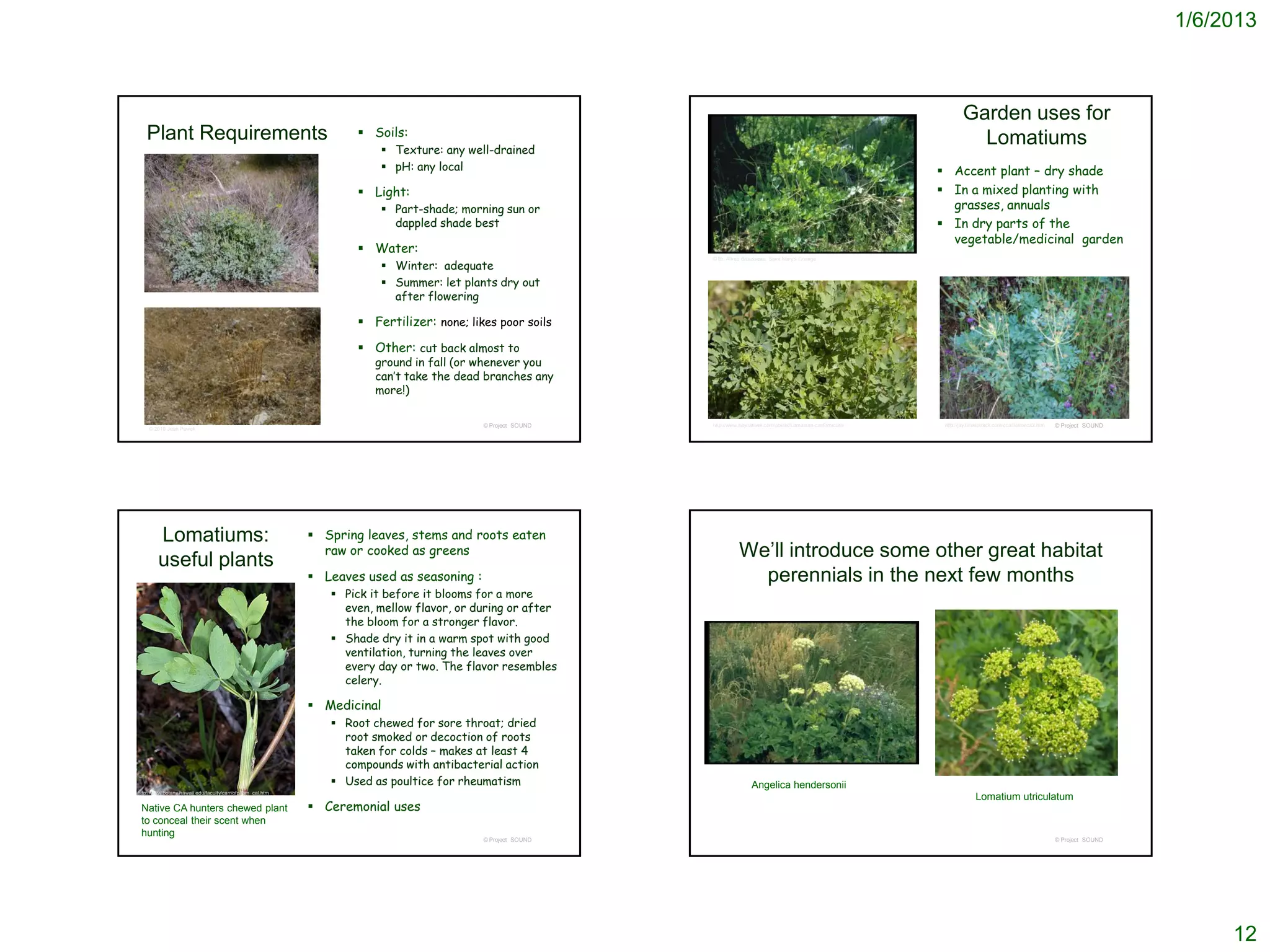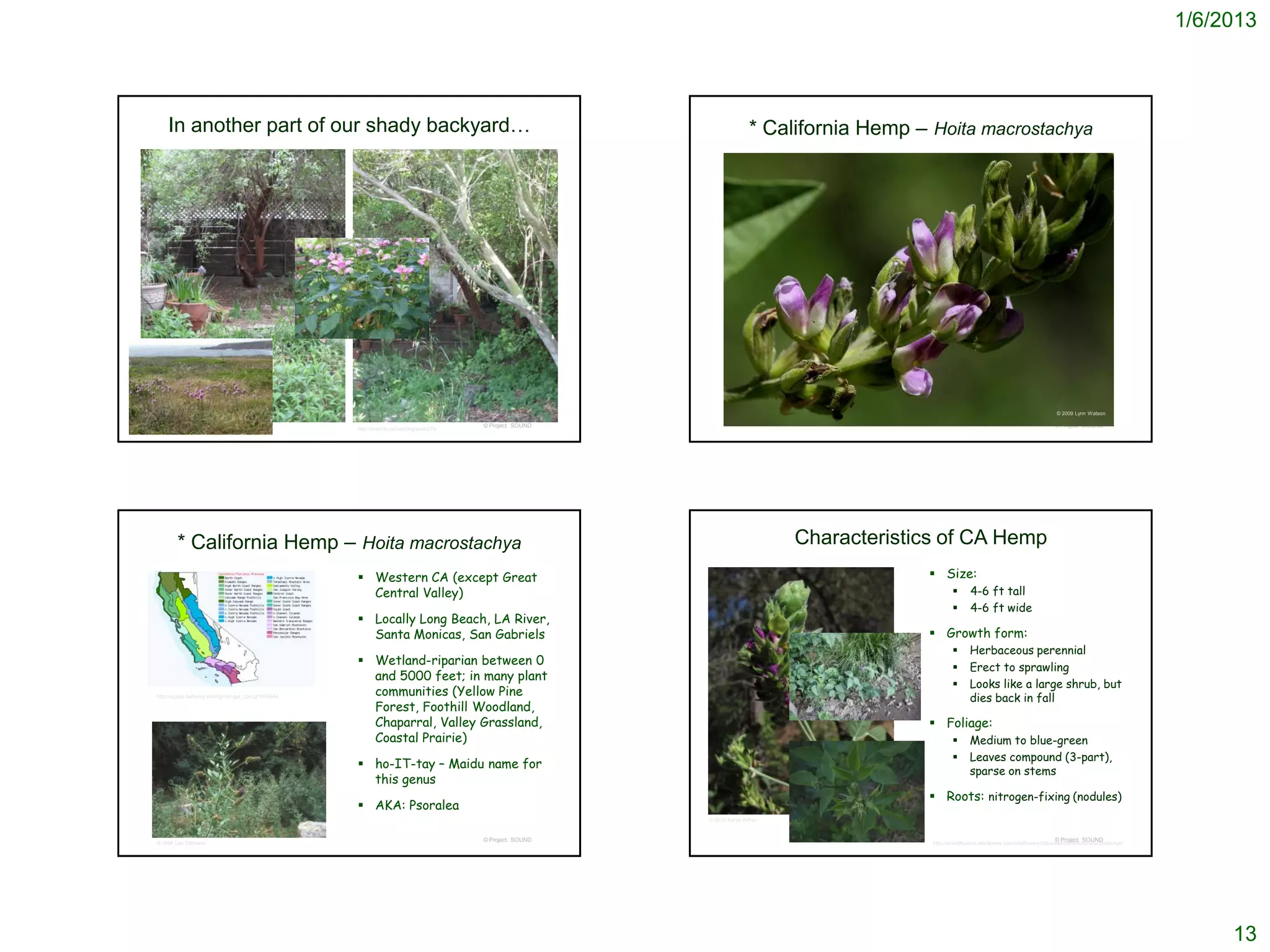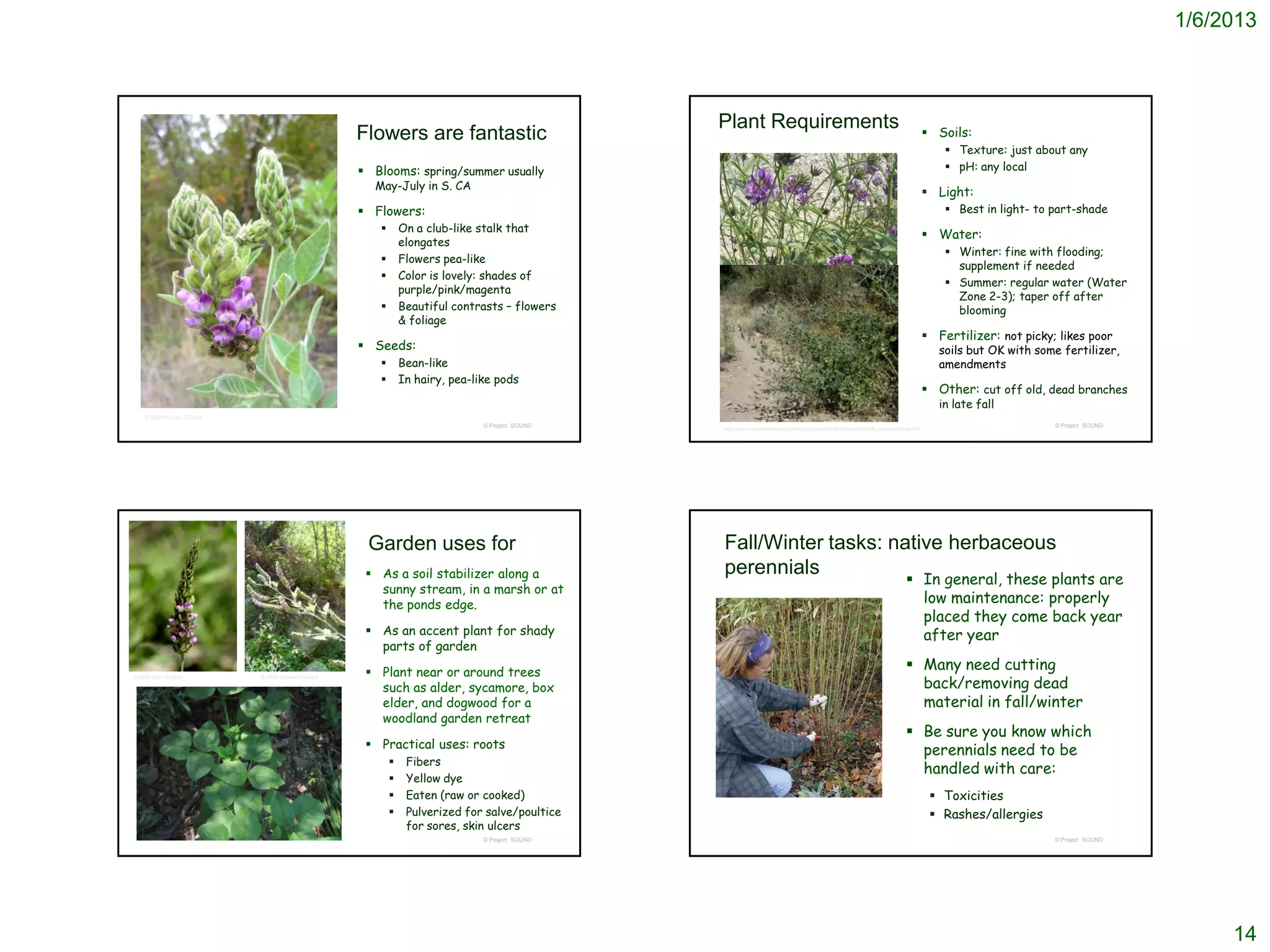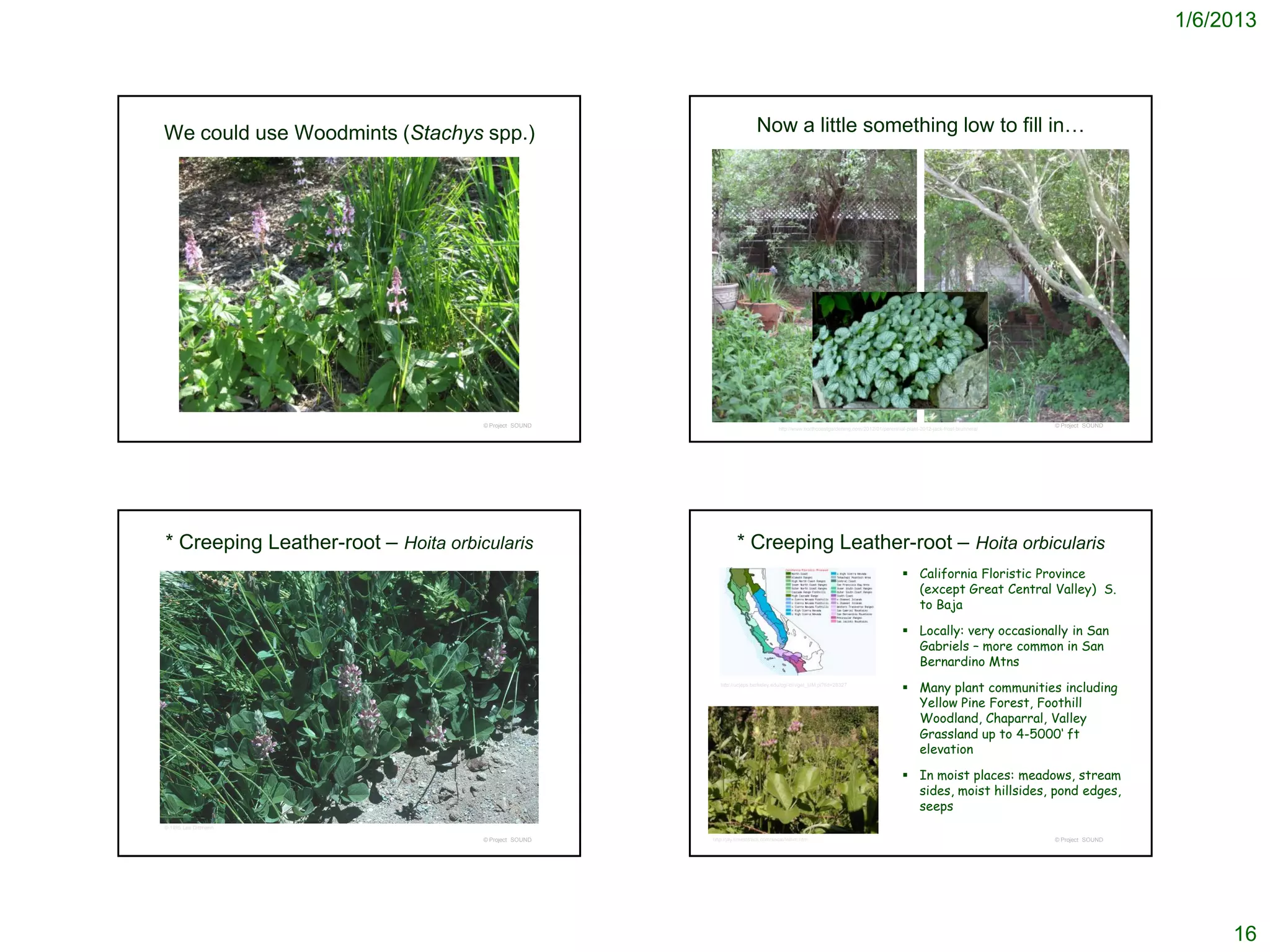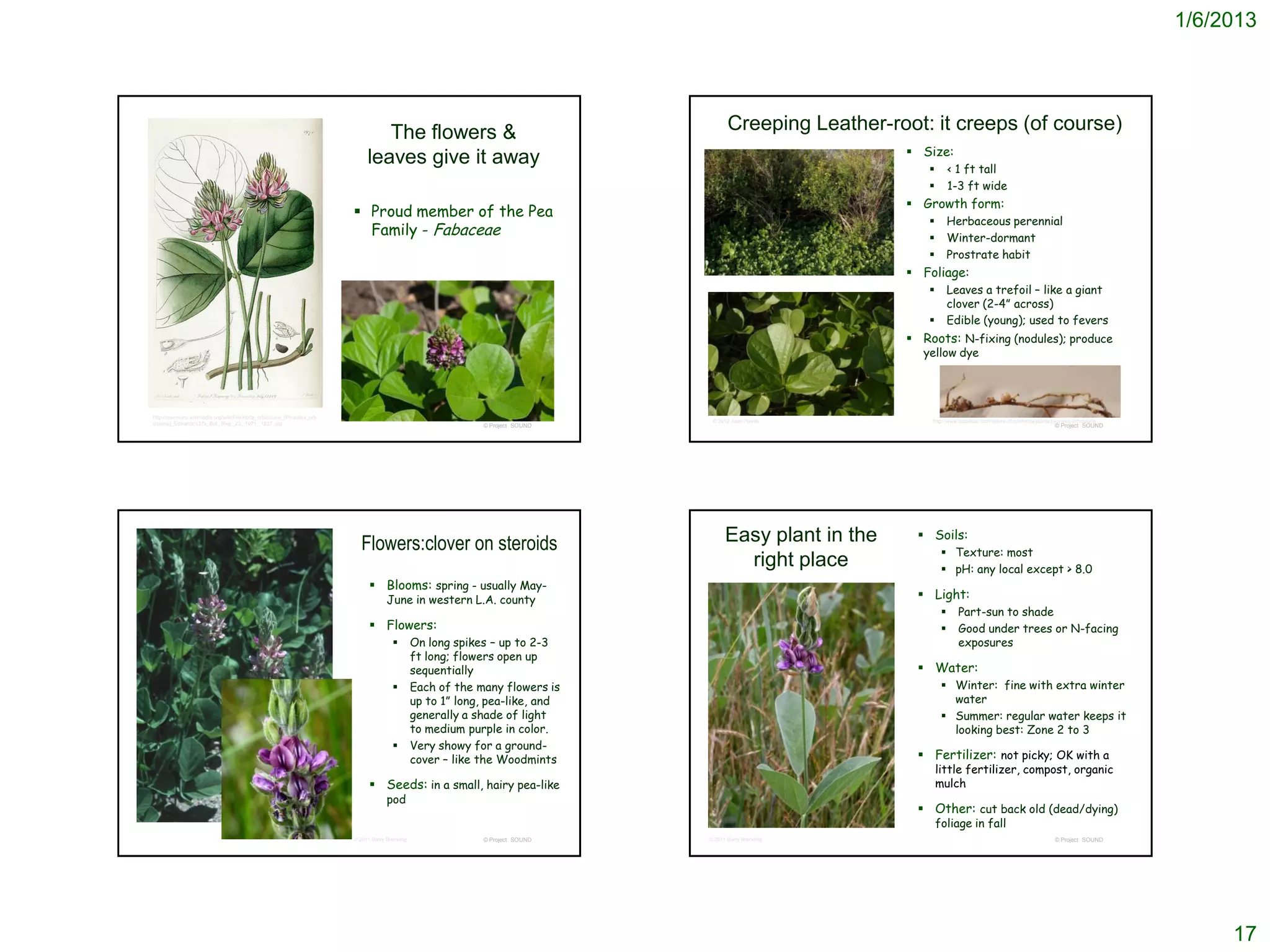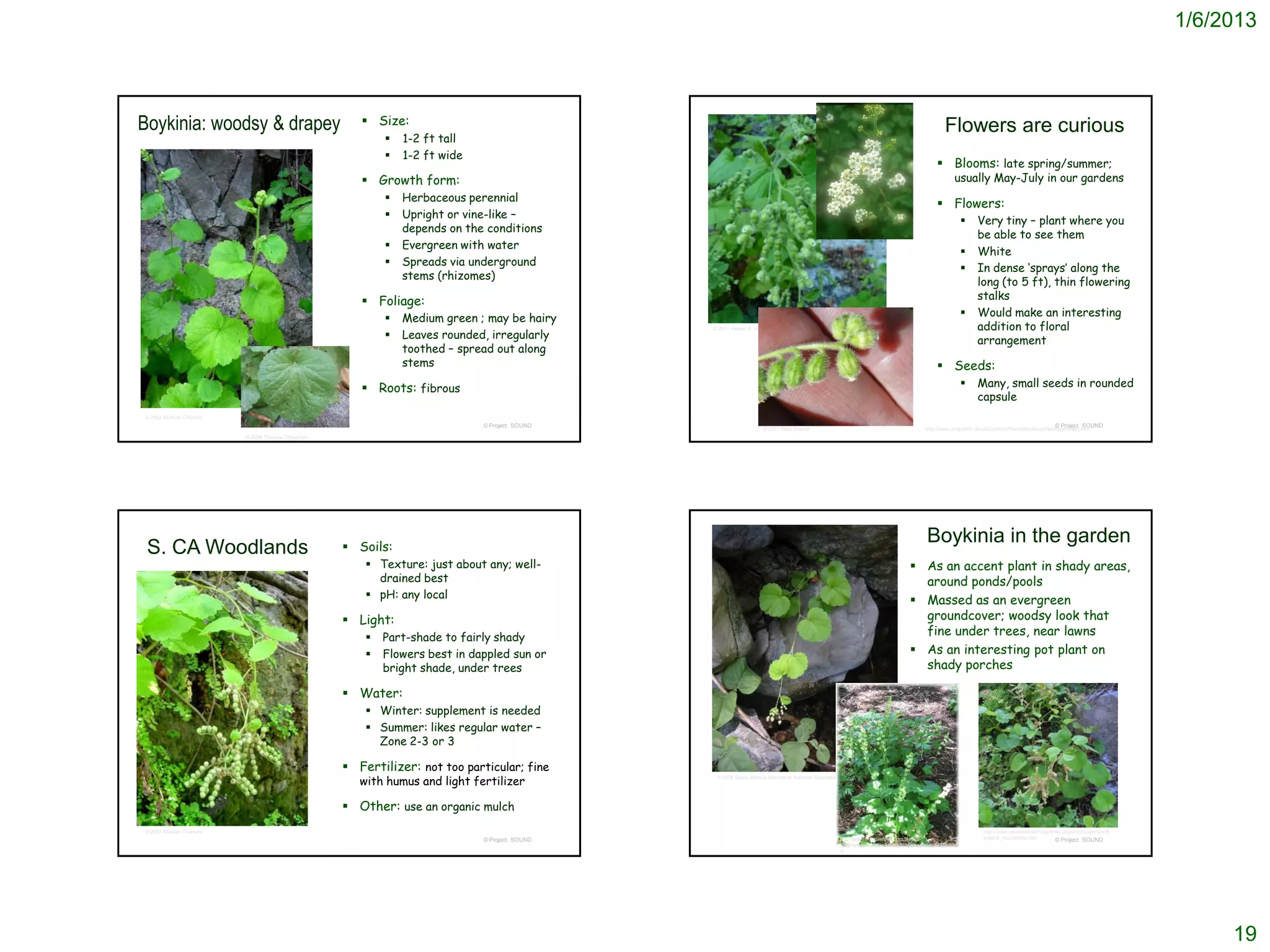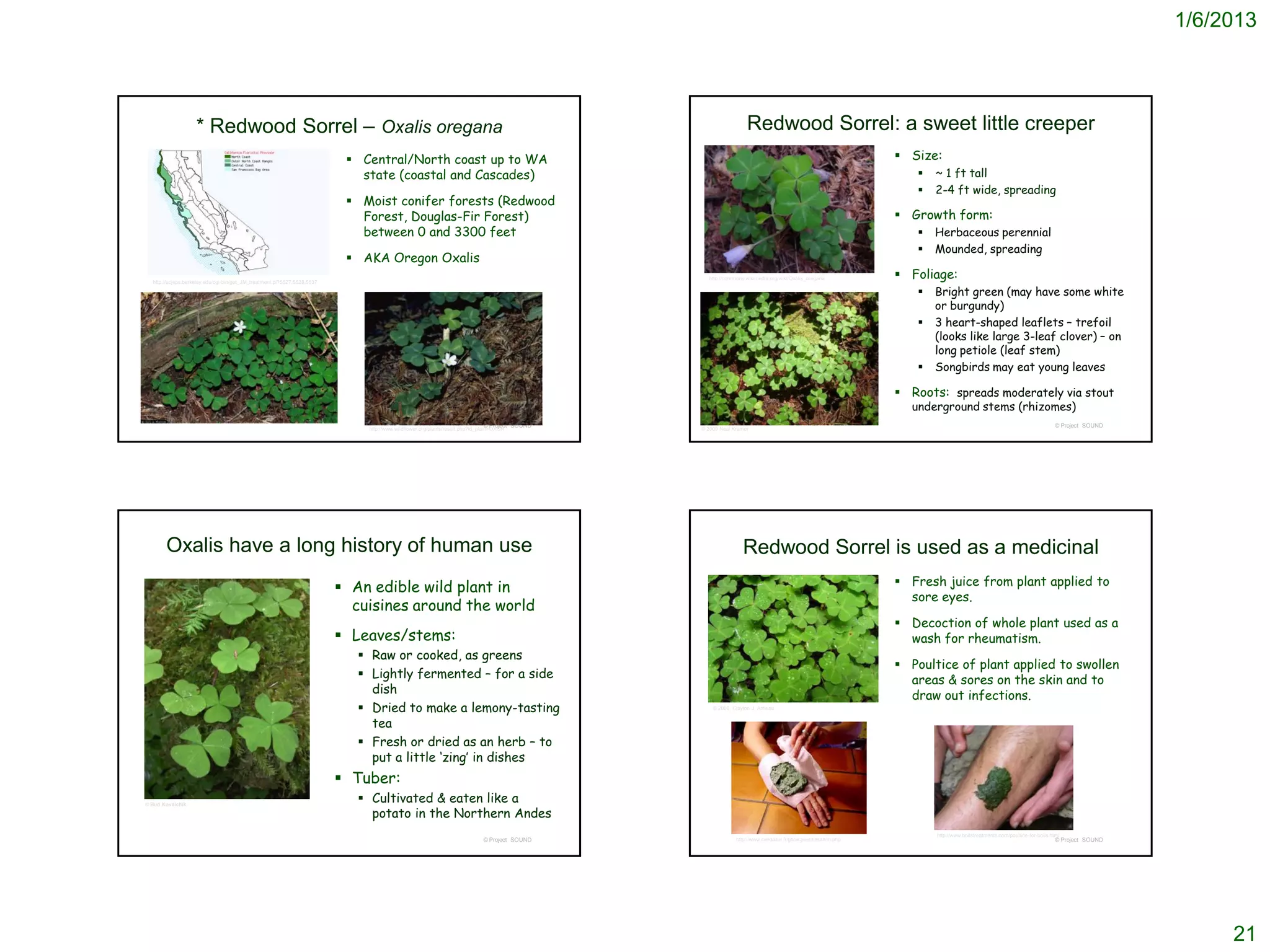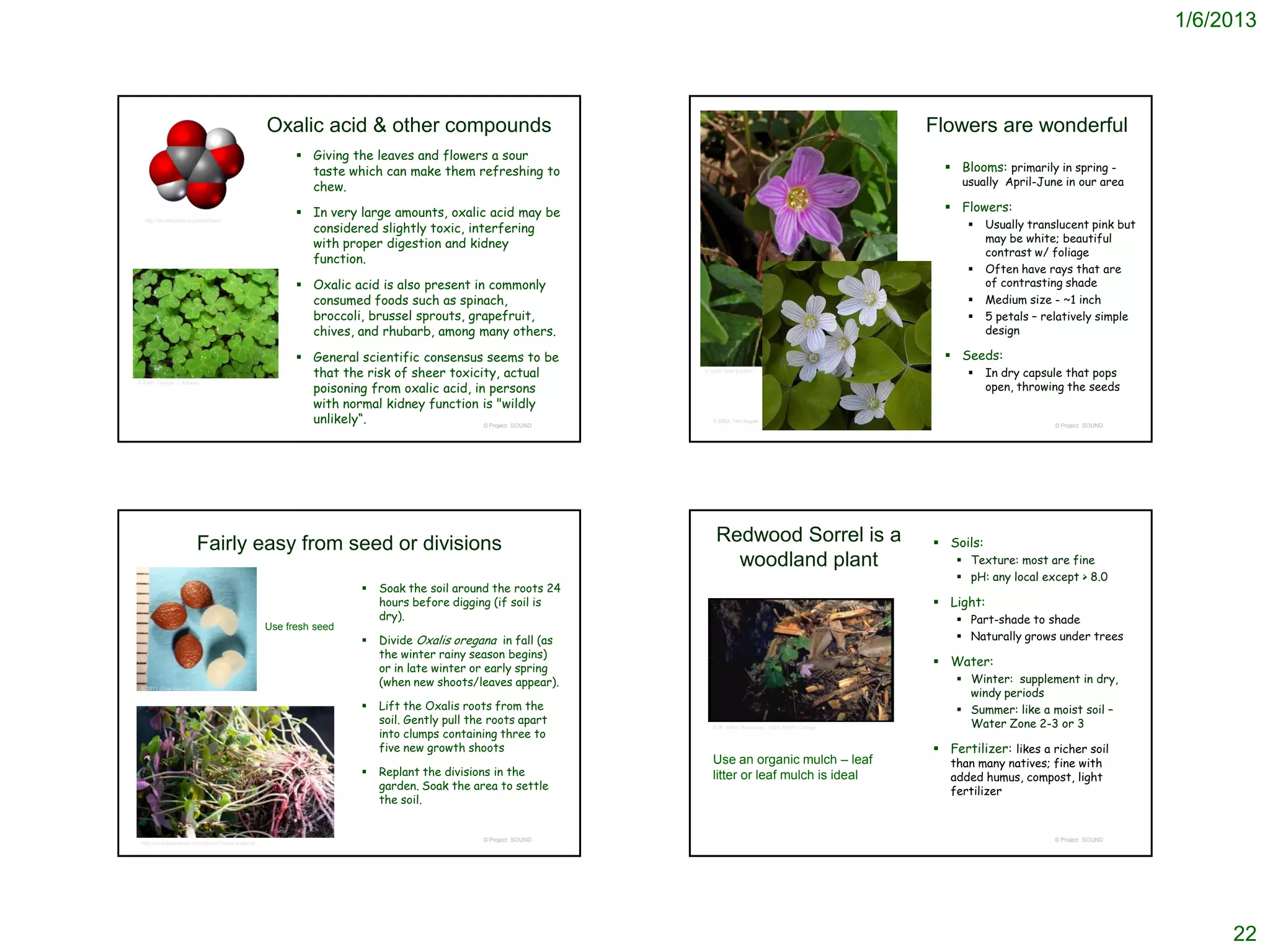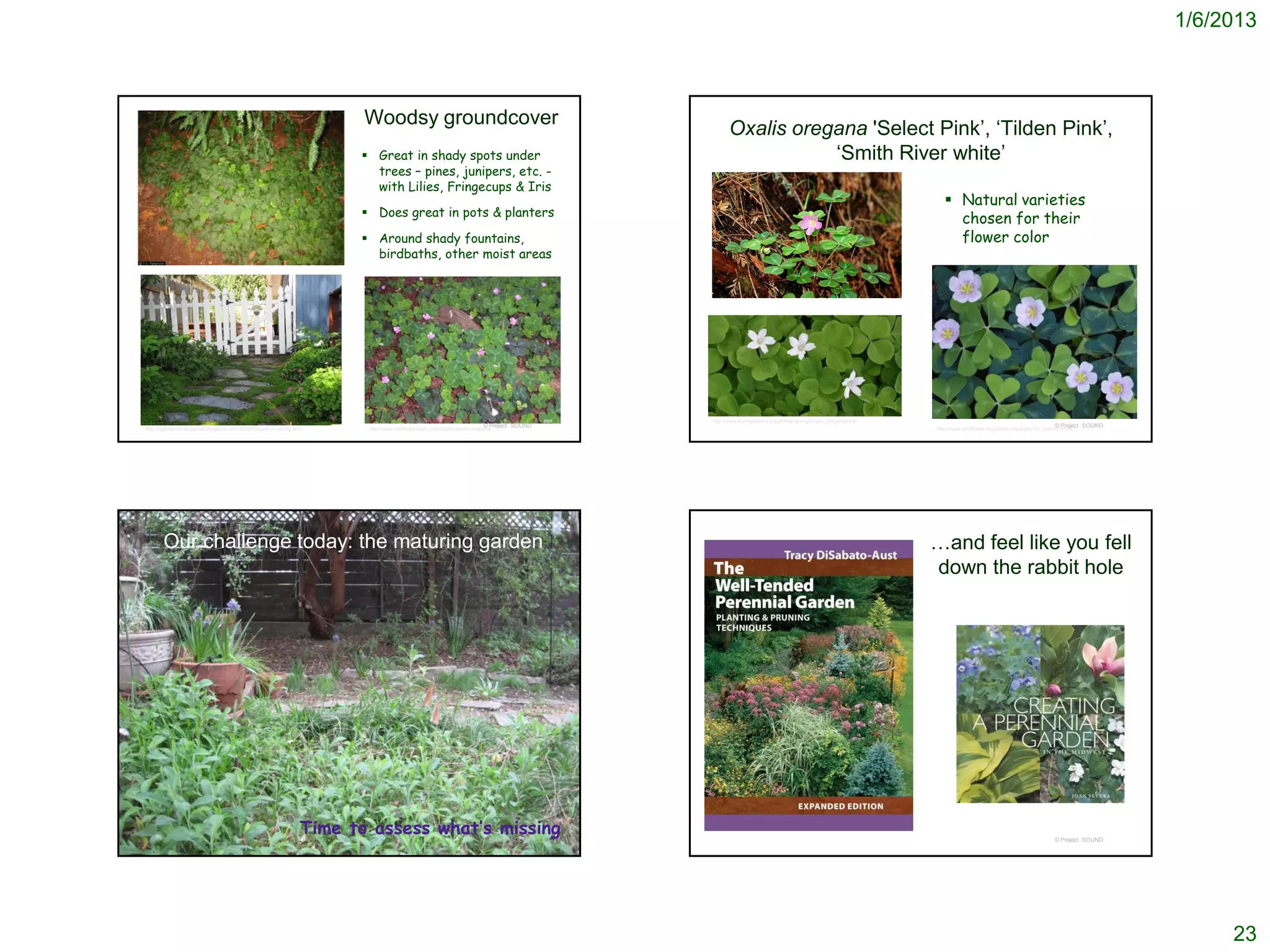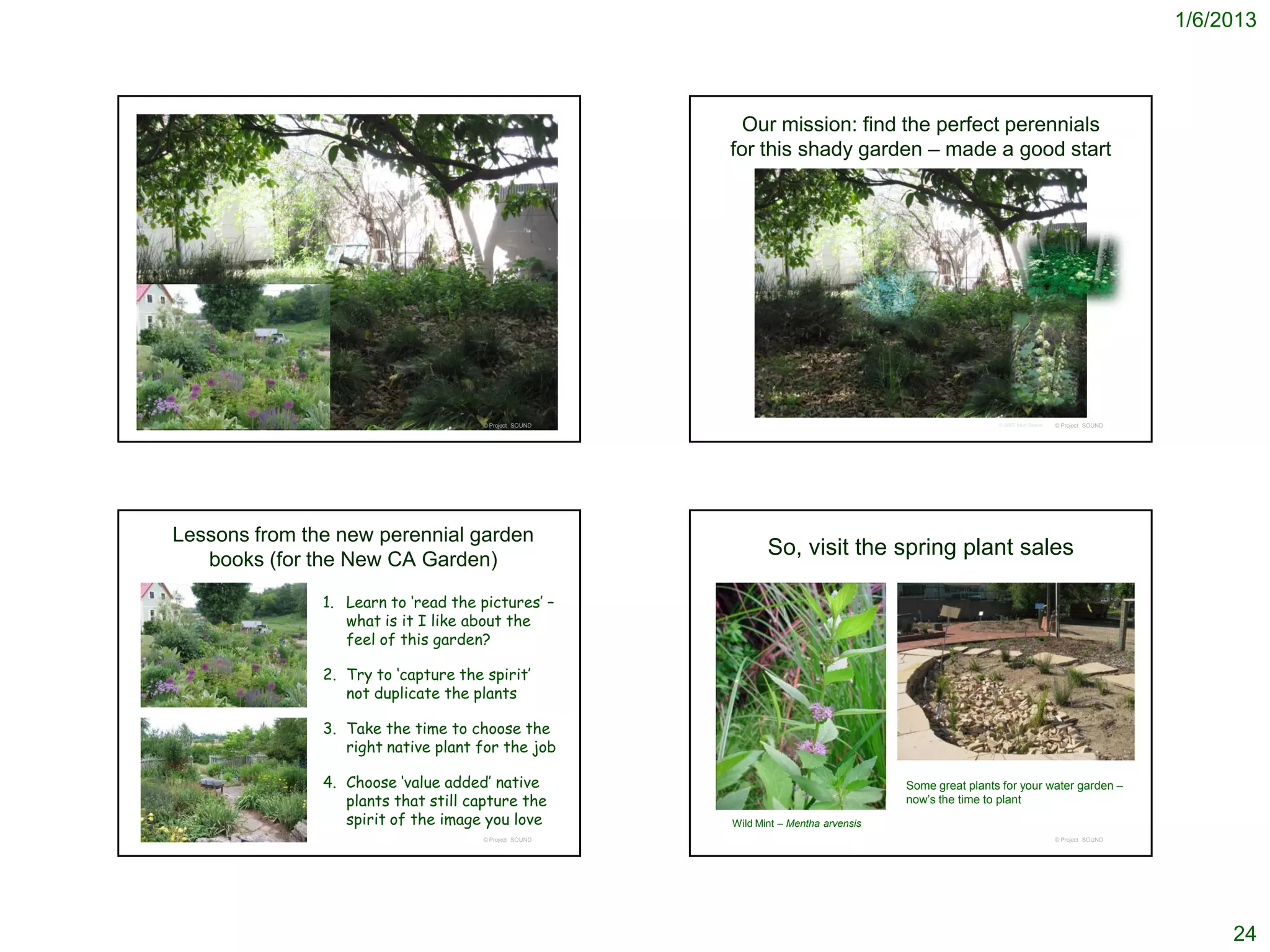This document discusses using California native perennial plants in gardens. It notes that perennials are plants that live more than two years and have soft above-ground foliage that dies back during dormant periods. The document distinguishes between herbaceous perennials and sub-shrubs, noting sub-shrubs are partially woody. When growing herbaceous perennials native to other regions in local Southern California gardens, the plants may not go dormant as expected since the drought or cold conditions that induce dormancy are absent. The document suggests native perennials could enhance maturing gardens but notes inspiration from other regions may not match the "New California Gardens" style.
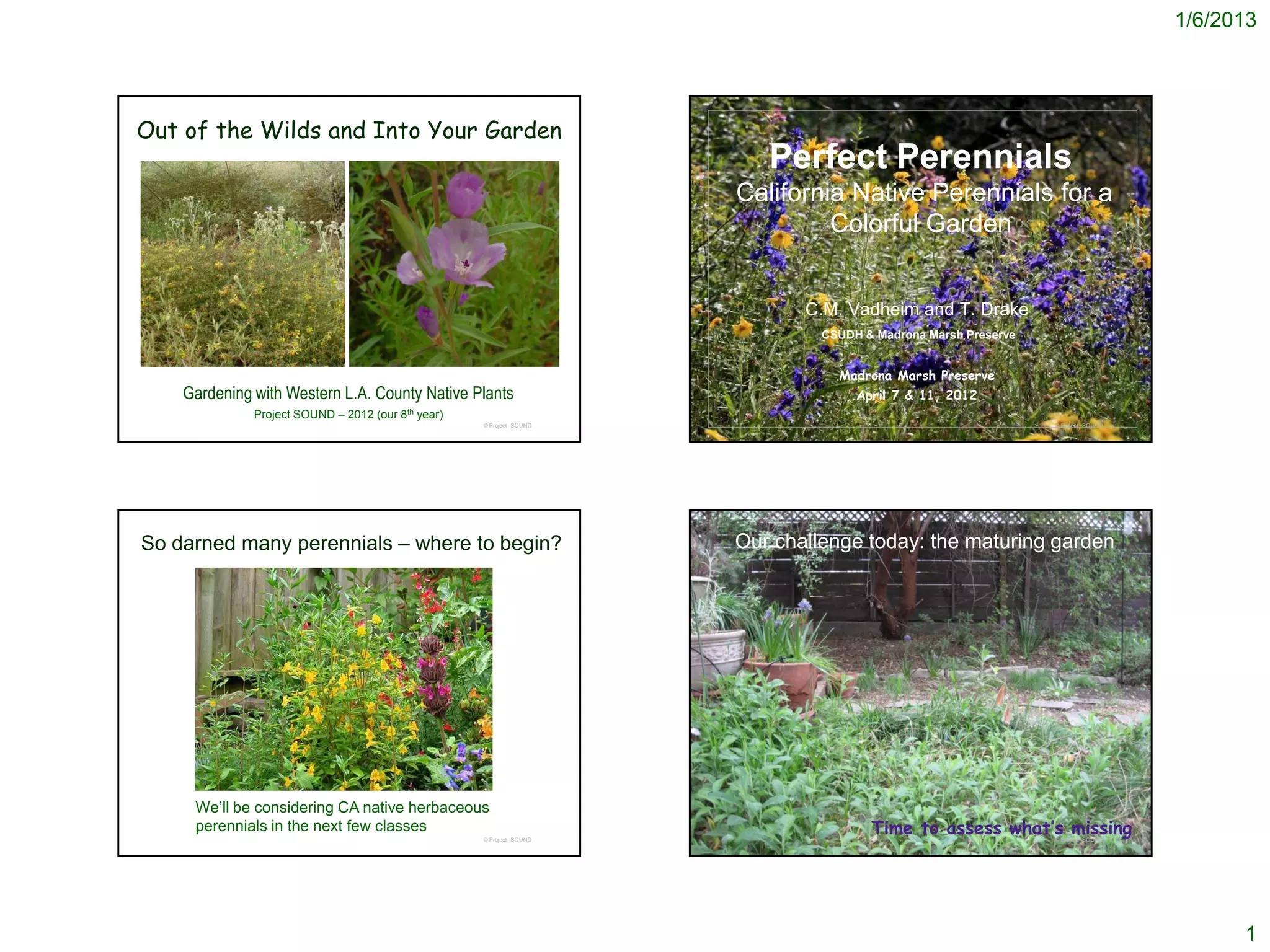
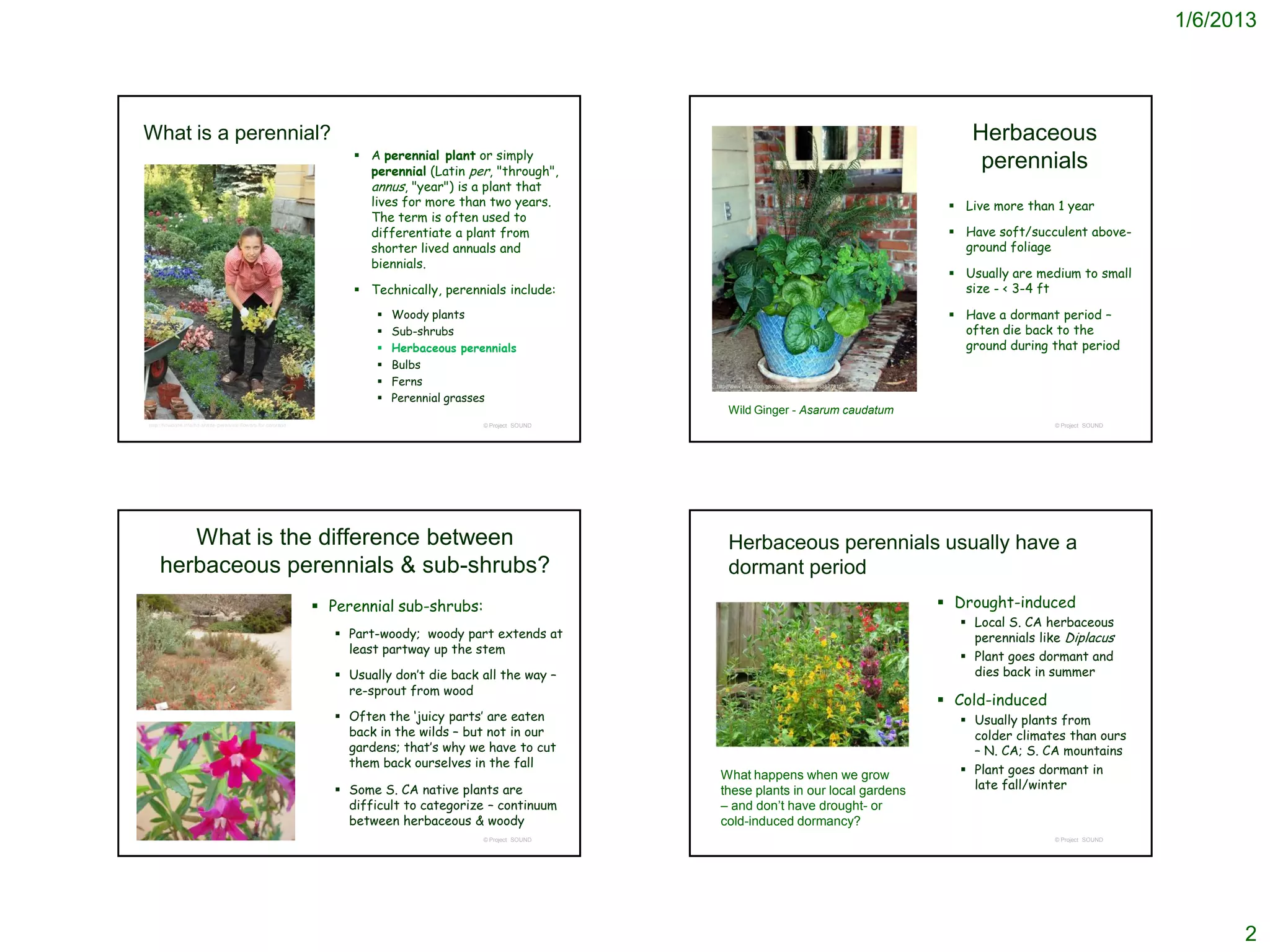



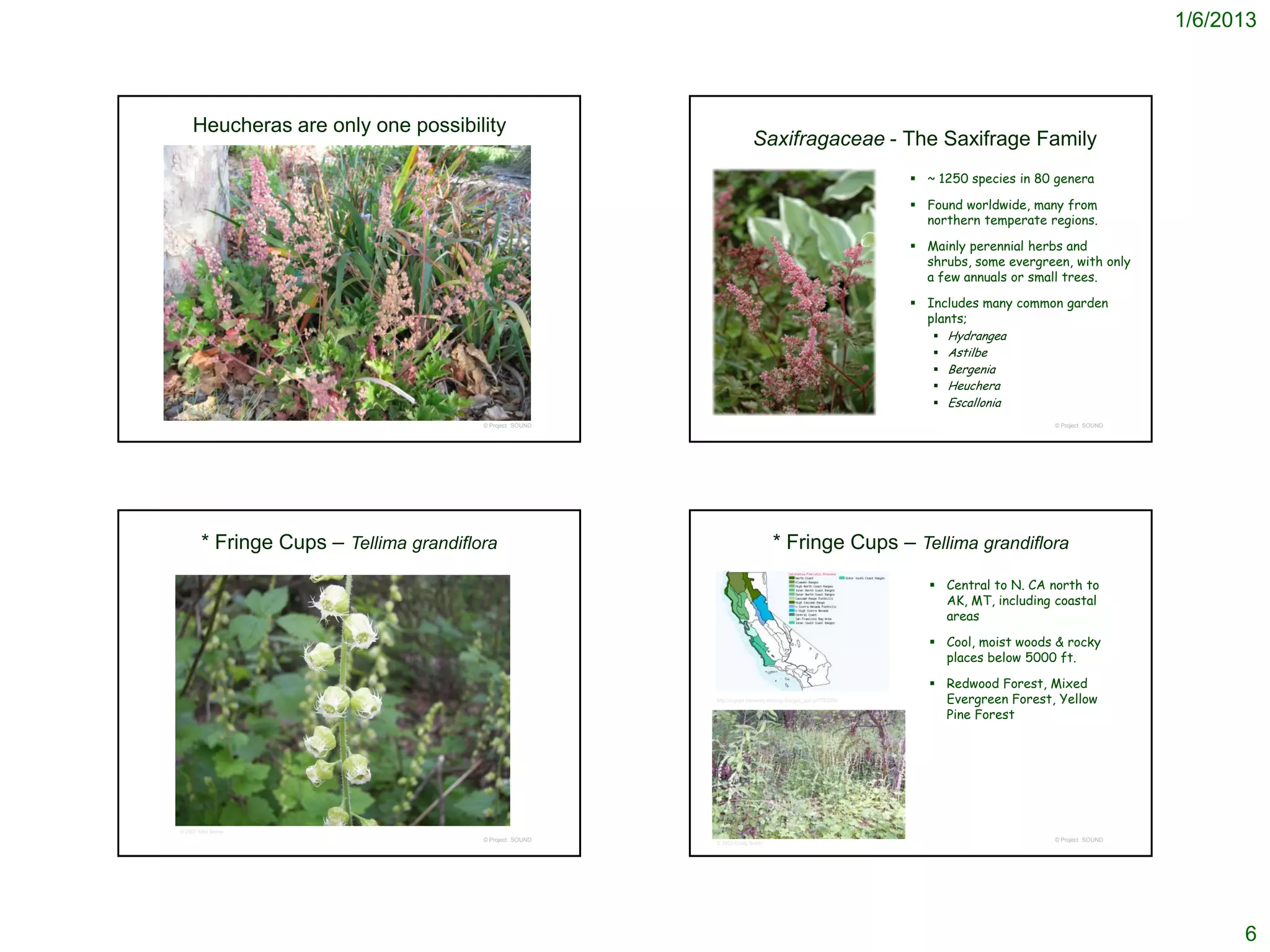
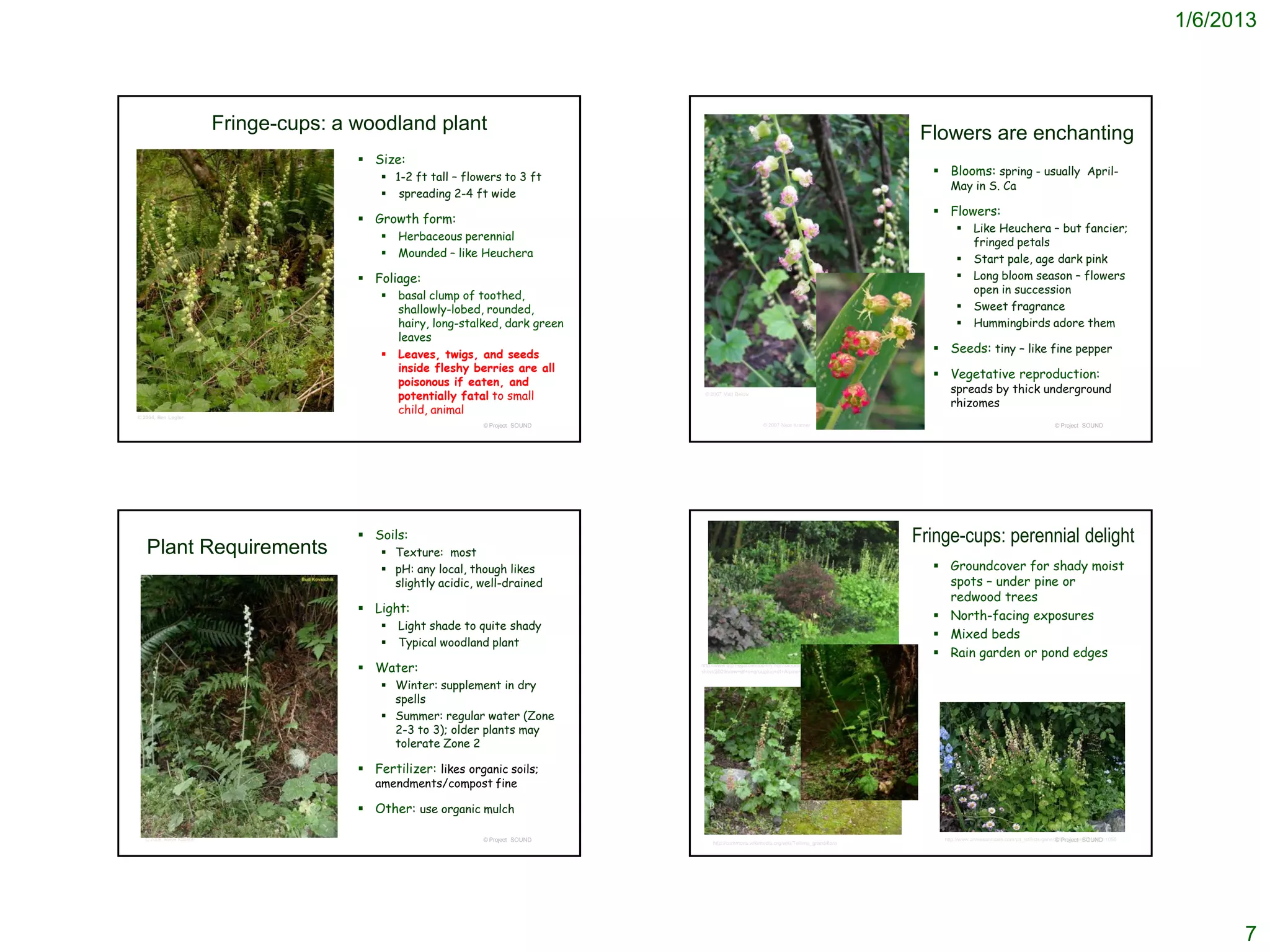
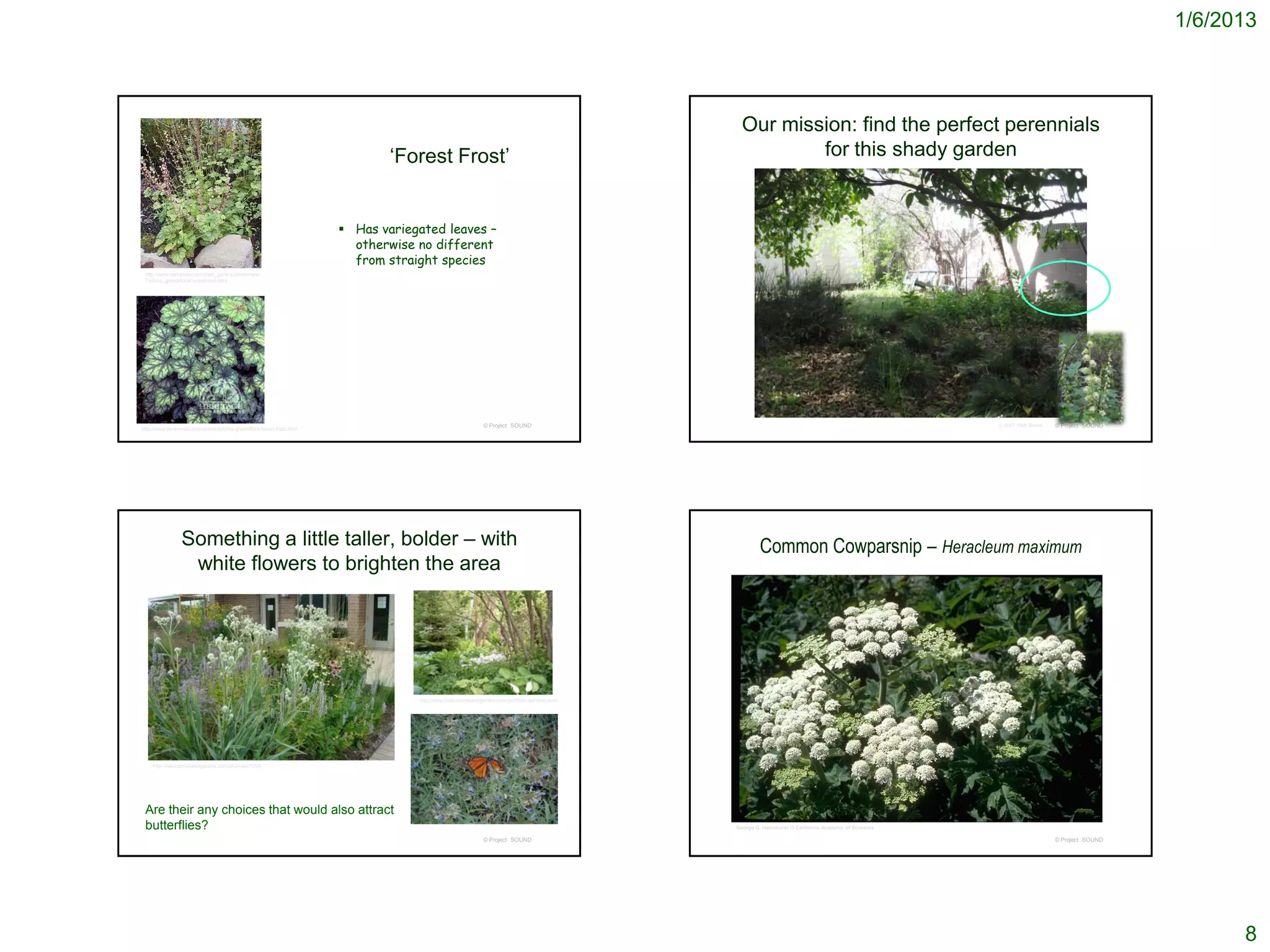
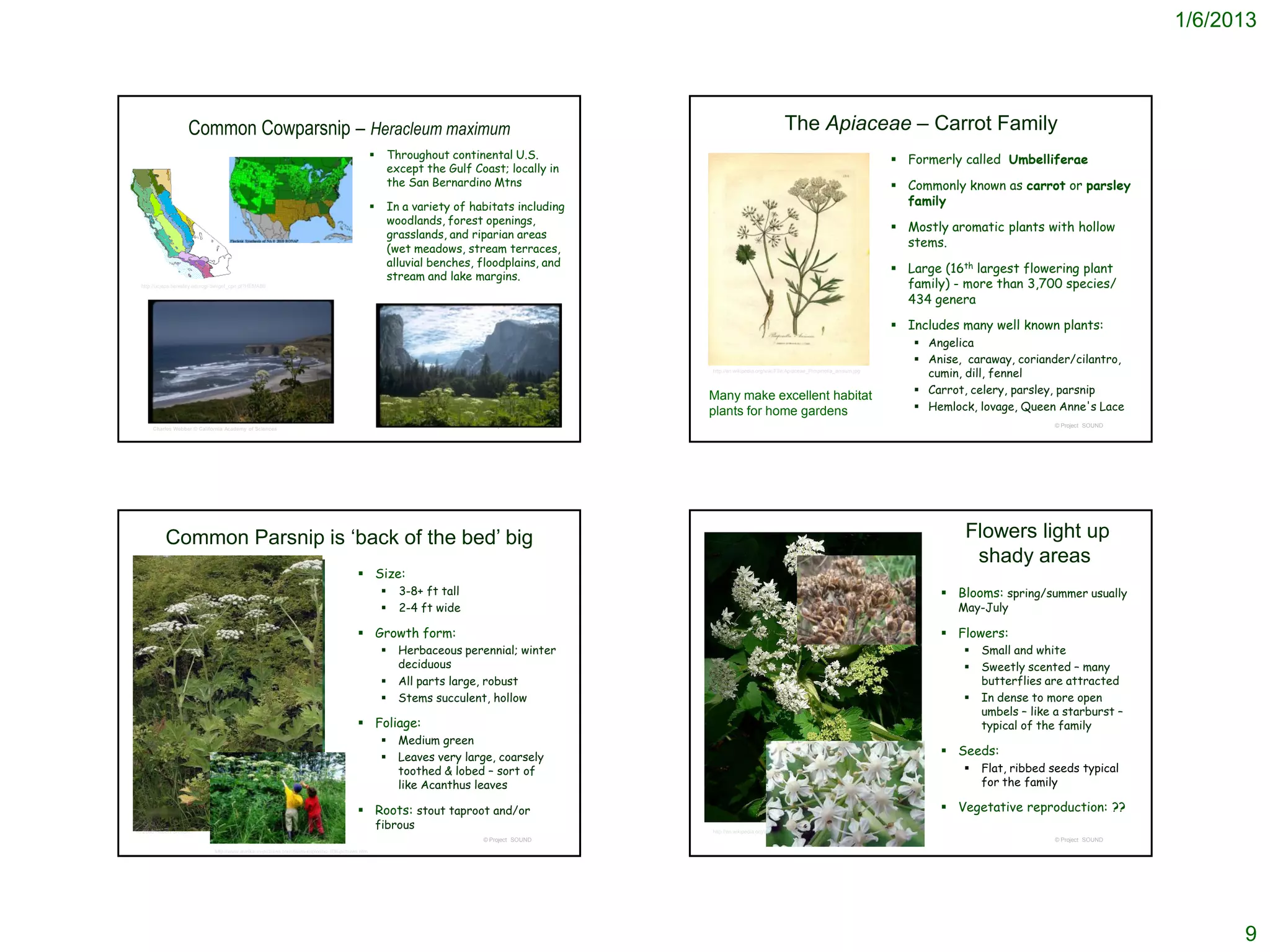
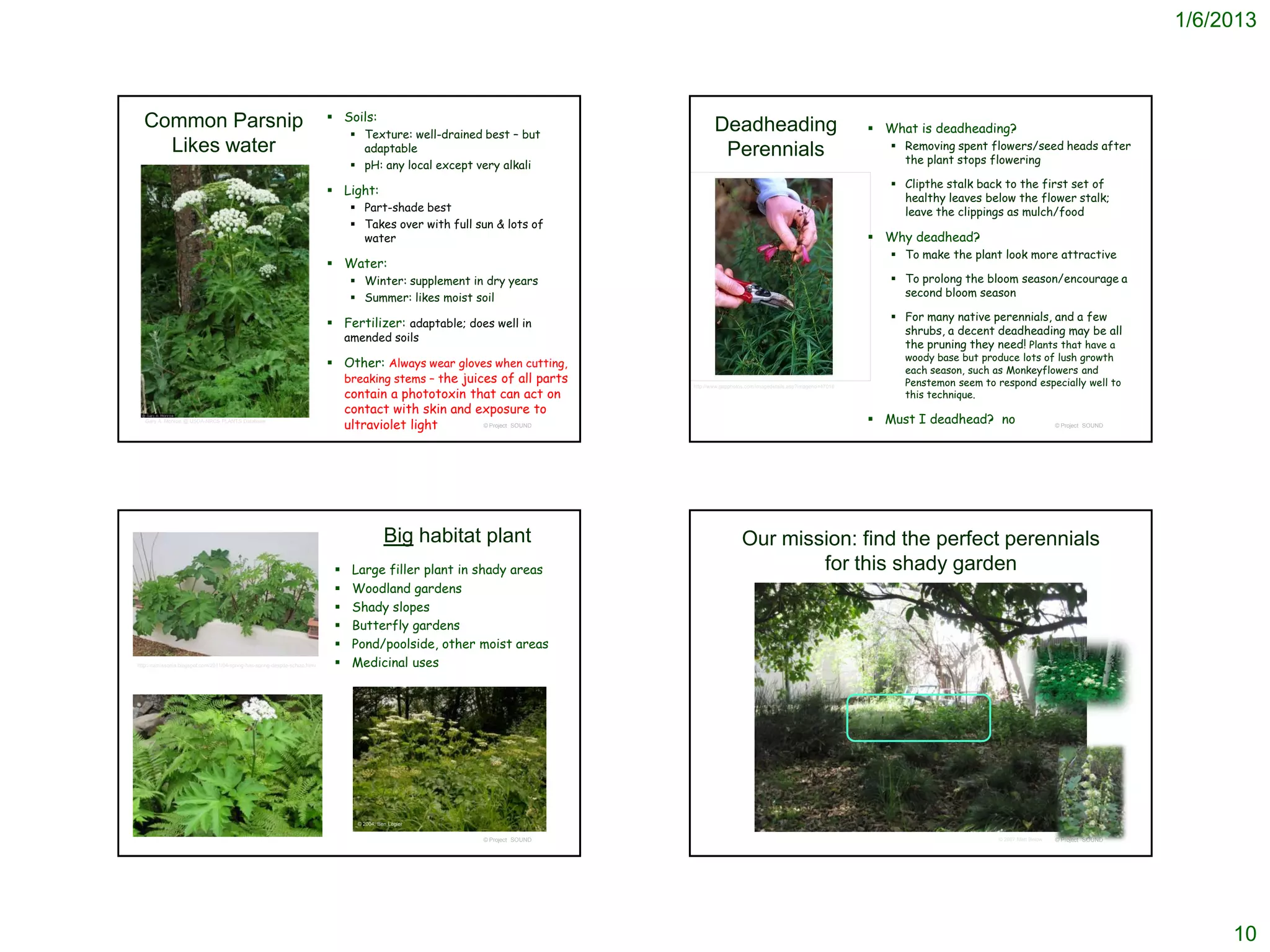
![1/6/2013
* CA Lomatium – Lomatium californicum * CA Lomatium – Lomatium californicum
Central & Northern CA from ];
Ventura and Kern Cos to S. OR
Wooded or brushy slopes to
5500', chaparral and foothill
woodlands
http://ucjeps.berkeley.edu/cgi-bin/get_JM_treatment.pl?329,426,428
J. E.(Jed) and Bonnie McClellan © California Academy of Sciences
© Project SOUND © Project SOUND
CA Lomatium: shrubby perennial Flowers are pretty
Size:
2-5 ft tall Blooms: spring-summer; usually
May-July
4-5 ft wide
Flowers:
Growth form:
Typical for the carrot family
Herbaceous perennial
Many, small yellow flowers
Shrubby-looking; clumped © 2007 Matt Below
In a rather open umbel
Dies back to short
stem/root in drought Flowers attract a wide range
of insect pollinators,
Foliage: including butterflies
Usually blue-green
Seeds:
Looks like celery – and
Flat, winged seed – typical of
smells like it too!
Carrot family
Larval food – Anise
If growing from seed, rinse
Swallowtail
several times in water –
Roots: taproot stout, thickened takes several days
© 1998 Dean Wm. Taylor © Project SOUND © Project SOUND
© 2009 Vernon Smith
11](https://image.slidesharecdn.com/apr-2012-130106173131-phpapp01/75/Perfect-Perennials-Notes-11-2048.jpg)
